‘Based on a true story’ movies that need a history lesson
Nathan Johnson
Published
09/03/2016
in
wow
when you read: “Based on a true story’” or “Based on actual events” in the opening credits you may be surprised how far away from the truth these movies venture
- List View
- Player View
- Grid View
Advertisement
-
1.
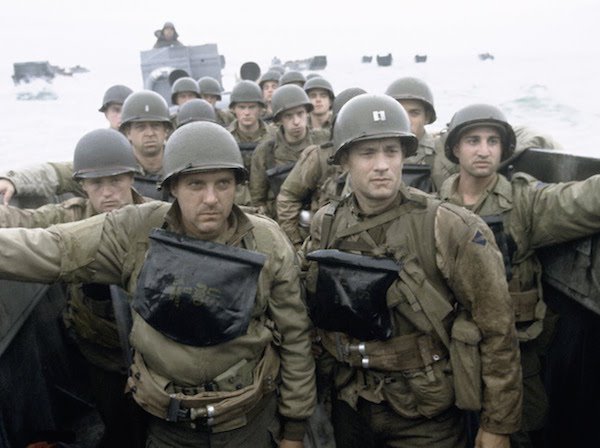 Saving Private Ryan. Although this film is fantastic and arguably one of the realest depictions of war ever filmed, the entire story is mostly fabricated. It’s based loosely on the case of the Niland brothers, three of four brothers thought killed in the war. Like the movie, the last surviving brother was sent home to his mother (in the end it turned out another one was alive but captured and so two survived the war). Another big difference in the film is that the real-life Private Ryan, Frederick “Fritz” Niland, never refused to go home and there wasn’t much of a search to find him. Still an awesome film, full of very amazing historically correct details.
Saving Private Ryan. Although this film is fantastic and arguably one of the realest depictions of war ever filmed, the entire story is mostly fabricated. It’s based loosely on the case of the Niland brothers, three of four brothers thought killed in the war. Like the movie, the last surviving brother was sent home to his mother (in the end it turned out another one was alive but captured and so two survived the war). Another big difference in the film is that the real-life Private Ryan, Frederick “Fritz” Niland, never refused to go home and there wasn’t much of a search to find him. Still an awesome film, full of very amazing historically correct details. -
2.
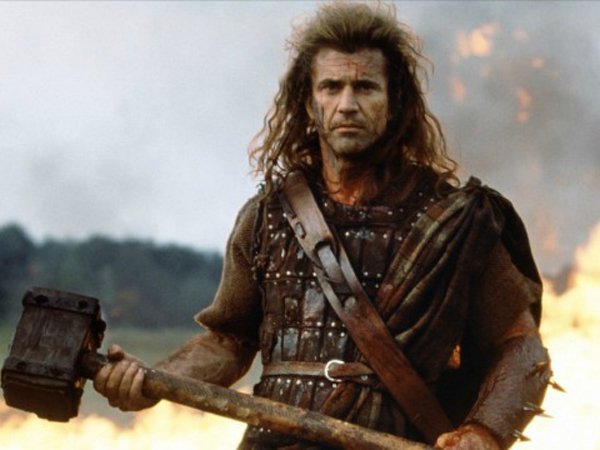 Braveheart. This so-called biopic has a lot wrong with it, but there are two standout mistakes as far as history goes. Firstly, the wearing of kilts or belted plaids by Wallace’s men. Scots didn’t wear anything like that during Wallace’s lifetime, and did not actually do so for another 300 years after he died! Even more bothersome is Wallace’s supposed seduction and impregnation of Isabella of France and the implication that Edward III was their love child. This is ridiculous for a number of good reasons. First of all, Isabella of France was not at the Battle of Falkirk, which is where they hook up in the film, but way more importantly than anything is that she was only three years old! at the time. On top of that, Edward III was also not born until seven years later which means Wallace would have had to of had some sort of time machine.
Braveheart. This so-called biopic has a lot wrong with it, but there are two standout mistakes as far as history goes. Firstly, the wearing of kilts or belted plaids by Wallace’s men. Scots didn’t wear anything like that during Wallace’s lifetime, and did not actually do so for another 300 years after he died! Even more bothersome is Wallace’s supposed seduction and impregnation of Isabella of France and the implication that Edward III was their love child. This is ridiculous for a number of good reasons. First of all, Isabella of France was not at the Battle of Falkirk, which is where they hook up in the film, but way more importantly than anything is that she was only three years old! at the time. On top of that, Edward III was also not born until seven years later which means Wallace would have had to of had some sort of time machine. -
3.
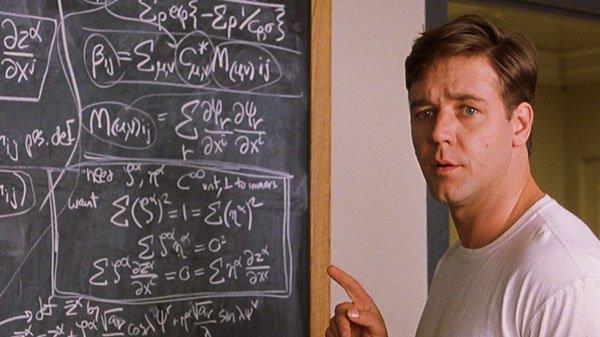 A Beautiful Mind. This 2001 biopic tells the story of the life and times of the late John Nash, a Nobel Laureate in Economics. The mathematician is known for his outstanding contributions to game theory and differential geometry. Despite his genius, his mind was not immune to illness. Nash was diagnosed with schizophrenia, and the film is a wonderful watch. However, the film differs greatly from Nash’s actual story, and has been highly criticized as a result. In the film, Nash’s illness appears years earlier then it really did, most of the characters are made up, and his son from a previous marriage is not portrayed at all. The representation of his symptoms have also been deemed inaccurate.
A Beautiful Mind. This 2001 biopic tells the story of the life and times of the late John Nash, a Nobel Laureate in Economics. The mathematician is known for his outstanding contributions to game theory and differential geometry. Despite his genius, his mind was not immune to illness. Nash was diagnosed with schizophrenia, and the film is a wonderful watch. However, the film differs greatly from Nash’s actual story, and has been highly criticized as a result. In the film, Nash’s illness appears years earlier then it really did, most of the characters are made up, and his son from a previous marriage is not portrayed at all. The representation of his symptoms have also been deemed inaccurate. -
4.
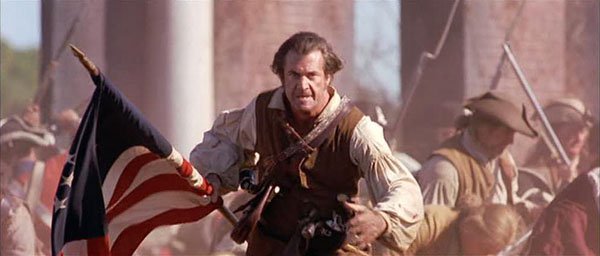 The Patriot. Another Mel Gibson film that bends actual events to a near breaking point. This film about the American Revolution follows Benjamin Martin as he leads the Colonial Militia after his son is murdered by a British officer. The film has a rather unfair representation of the British Soldiers. This is fairly obvious in the scene where the soldiers burn the elderly, women and children to death inside a church. Jason Isaacs’s evil British colonel was based on the historical figure Col. Tarleton, and there’s no real evidence that he ever broke the rules of engagement, let alone shot a child in cold blood. Gibson’s character was based on someone called Francis “The Swamp Fox’ Marion, who hunted Native Americans for sport and raped his female slaves. He also didn’t have his children until after the war — when he married his cousin. So next time you watch it’s probably a good thing to keep in mind that it’s almost entirely a work of fiction, albeit entertaining fiction. I mean nothing exemplifies its disregard for the true like the final battle of Guilford Court House, where Martin defeats his nemesis. In reality, the Americans lost that skirmish.
The Patriot. Another Mel Gibson film that bends actual events to a near breaking point. This film about the American Revolution follows Benjamin Martin as he leads the Colonial Militia after his son is murdered by a British officer. The film has a rather unfair representation of the British Soldiers. This is fairly obvious in the scene where the soldiers burn the elderly, women and children to death inside a church. Jason Isaacs’s evil British colonel was based on the historical figure Col. Tarleton, and there’s no real evidence that he ever broke the rules of engagement, let alone shot a child in cold blood. Gibson’s character was based on someone called Francis “The Swamp Fox’ Marion, who hunted Native Americans for sport and raped his female slaves. He also didn’t have his children until after the war — when he married his cousin. So next time you watch it’s probably a good thing to keep in mind that it’s almost entirely a work of fiction, albeit entertaining fiction. I mean nothing exemplifies its disregard for the true like the final battle of Guilford Court House, where Martin defeats his nemesis. In reality, the Americans lost that skirmish. -
5.
 Pocahontas. Yes. I know it’s a cartoon but there’s still some very interesting choices of artistic license used here. John Smith’s original encounter with the Native American princess was somewhat different to the Disney version. First of all, and perhaps most disturbingly, Pocahontas was actually only 10 or 11 years old when Smith arrived, but in the film she is depicted as a young adult who then enjoys a romantic relationship with the Captain. There is, thankfully, no evidence that Smith was interested in children or was romantically involved with Pocahontas.
Pocahontas. Yes. I know it’s a cartoon but there’s still some very interesting choices of artistic license used here. John Smith’s original encounter with the Native American princess was somewhat different to the Disney version. First of all, and perhaps most disturbingly, Pocahontas was actually only 10 or 11 years old when Smith arrived, but in the film she is depicted as a young adult who then enjoys a romantic relationship with the Captain. There is, thankfully, no evidence that Smith was interested in children or was romantically involved with Pocahontas. -
6.
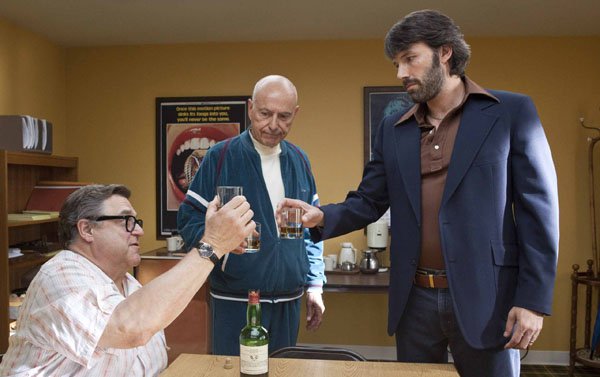 Argo. The 2013 Oscar-winning movie follows a CIA agent masquerading as a Hollywood producer in order to rescue 6 Americans in Tehran during the U.S. hostage crisis A major plot point of contention is the American government’s resistance to the film crew’s plan. In fact, this wasn’t an issue, they chose the crew option out of three options offered by the CIA. Another scene sees the crew almost get lynched by a group of Iranians in Tehran’s Grand Bazaar. In reality, this never happened, because they were never there. Another famous scene in the film when their plane tickets are cancelled and later reconfirmed, never happened in the real-world wife of the Canadian ambassador personally pre-purchased tickets and there was no issue with them getting on the flight. There was also no interrogation, and definitely no chase on the airport runway with Iranians wielding machine guns. One of the actual diplomats noted that the CIA’s fake cover story was “never tested and in some ways proved irrelevant.” But I guess that would make for a very dull movie.
Argo. The 2013 Oscar-winning movie follows a CIA agent masquerading as a Hollywood producer in order to rescue 6 Americans in Tehran during the U.S. hostage crisis A major plot point of contention is the American government’s resistance to the film crew’s plan. In fact, this wasn’t an issue, they chose the crew option out of three options offered by the CIA. Another scene sees the crew almost get lynched by a group of Iranians in Tehran’s Grand Bazaar. In reality, this never happened, because they were never there. Another famous scene in the film when their plane tickets are cancelled and later reconfirmed, never happened in the real-world wife of the Canadian ambassador personally pre-purchased tickets and there was no issue with them getting on the flight. There was also no interrogation, and definitely no chase on the airport runway with Iranians wielding machine guns. One of the actual diplomats noted that the CIA’s fake cover story was “never tested and in some ways proved irrelevant.” But I guess that would make for a very dull movie. -
7.
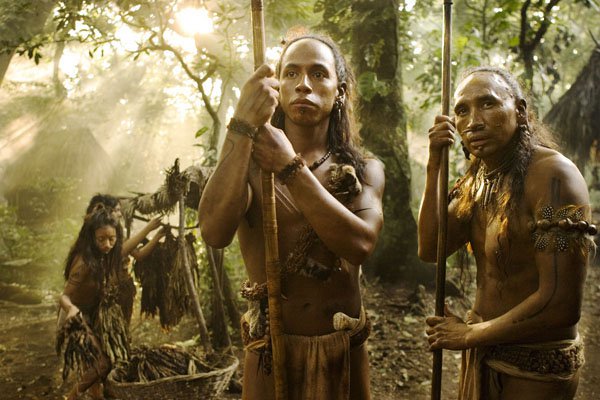 Apocalypto. The third Mel Gibson movie on this list. This film seems to present itself as an authentic tale thanks to the use of real ancient Mayan language and subtitles, but it’s far from it. The Mayans in the film were portrayed as crazy savages, which was more akin to the Aztecs; the Mayans were actually a reasonably peaceful people. Mayans also rarely performed any human sacrifice. If they did, it was against treacherous elites, never commoners. Also, the movie ends with the arrival of the Spaniards, which didn’t happen in Mexico until around 400 years after the Mayan collapse.
Apocalypto. The third Mel Gibson movie on this list. This film seems to present itself as an authentic tale thanks to the use of real ancient Mayan language and subtitles, but it’s far from it. The Mayans in the film were portrayed as crazy savages, which was more akin to the Aztecs; the Mayans were actually a reasonably peaceful people. Mayans also rarely performed any human sacrifice. If they did, it was against treacherous elites, never commoners. Also, the movie ends with the arrival of the Spaniards, which didn’t happen in Mexico until around 400 years after the Mayan collapse. -
8.
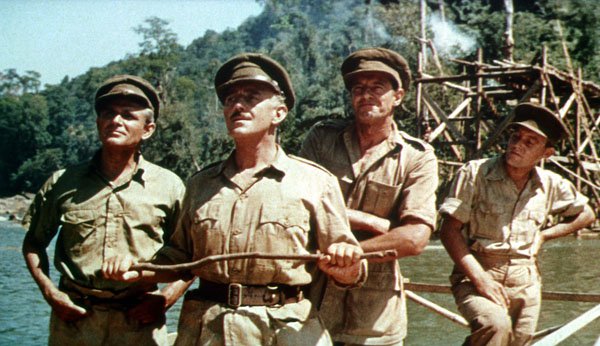 The Bridge on the River Kwai. A classic, but a historically inaccurate classic none the less. The film’s story of prisoners of war in Japan is captivating and fascinating, yet its depiction of British Commander Colonel Nicholson by Alec Guinness is far from accurate. Nicholson – A.K.A. Lieutenant Colonel Philip Toosey – is shown in the film as obsessed with maintaining his troop’s morale and he urges them to help the Japanese in constructing the bridge, before later deciding to destroy the structure after realising it would in fact aid the enemy. In reality, however, Toosey was not obsessed with building the bridge, but in fact he knew that co-operating with the Japanese and assisting them with construction would ensure he kept his fellow officers alive. They also tried to slow the build and even sabotaged the bridge with termites.
The Bridge on the River Kwai. A classic, but a historically inaccurate classic none the less. The film’s story of prisoners of war in Japan is captivating and fascinating, yet its depiction of British Commander Colonel Nicholson by Alec Guinness is far from accurate. Nicholson – A.K.A. Lieutenant Colonel Philip Toosey – is shown in the film as obsessed with maintaining his troop’s morale and he urges them to help the Japanese in constructing the bridge, before later deciding to destroy the structure after realising it would in fact aid the enemy. In reality, however, Toosey was not obsessed with building the bridge, but in fact he knew that co-operating with the Japanese and assisting them with construction would ensure he kept his fellow officers alive. They also tried to slow the build and even sabotaged the bridge with termites. -
9.
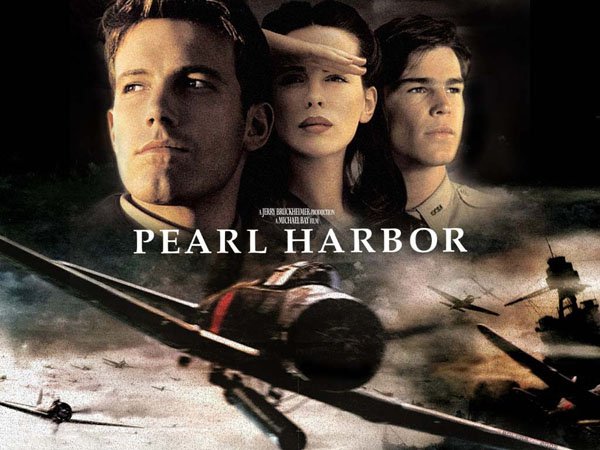 Special mention! – Pearl Harbor. Now there’s so much wrong with this terrible film it could take up an entire post on it’s own. I mean at one point President Roosevelt stands up from his wheelchair and walks. But I think the best way to sum it up is this summery from it’s Wikipedia page: “Pearl Harbor is a 2001 American epic historical romantic war film directed by Michael Bay, produced by Michael Bay “
Special mention! – Pearl Harbor. Now there’s so much wrong with this terrible film it could take up an entire post on it’s own. I mean at one point President Roosevelt stands up from his wheelchair and walks. But I think the best way to sum it up is this summery from it’s Wikipedia page: “Pearl Harbor is a 2001 American epic historical romantic war film directed by Michael Bay, produced by Michael Bay “
- REPLAY GALLERY
-

- ‘Based on a true story’ movies that need a history lesson
Saving Private Ryan. Although this film is fantastic and arguably one of the realest depictions of war ever filmed, the entire story is mostly fabricated. It’s based loosely on the case of the Niland brothers, three of four brothers thought killed in the war. Like the movie, the last surviving brother was sent home to his mother (in the end it turned out another one was alive but captured and so two survived the war). Another big difference in the film is that the real-life Private Ryan, Frederick “Fritz” Niland, never refused to go home and there wasn’t much of a search to find him. Still an awesome film, full of very amazing historically correct details.
9/9
1/9
Categories:
Wow


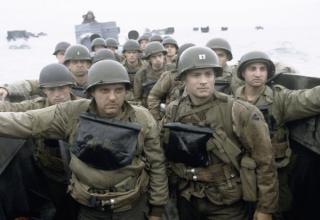
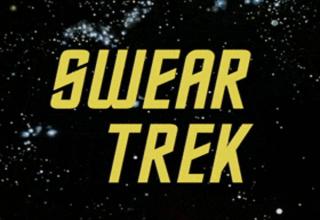






2 Comments